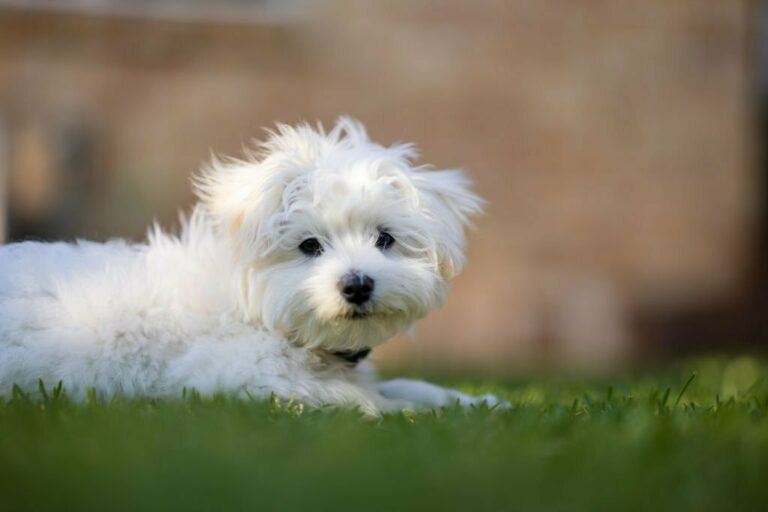Puppy Health and Care: Maltipoo Dog Breed Information
The Maltipoo is a charming mix between a Maltese and a Poodle, well-loved for their adaptable nature and small size. They boast a variety of coat colors and textures, and these poodle mix pups are intelligent and full of life.
Many people with allergies prefer Maltipoos because their coats are less likely to cause allergic reactions. Maltipoos, a friendly and energetic breed, can adapt well to various homes, whether it be a city apartment or a house with a yard.
Regular grooming keeps their coat in good shape, and these small companion dogs thrive on playtime and obedience training sessions. Introducing them to different people and situations early on helps them grow into friendly and well-behaved dogs.
While they generally lead a healthy life, future owners must be aware of the common health issues of this breed of dog.
Key Takeaways
- Maltipoos are a Maltese and Poodle blend, perfect for small homes.
- Their low-shedding coats make them a top choice for allergy sufferers.
- Socialization and grooming are key for a healthy Maltipoo life.
The mixed breed dog, Maltipoos, combines traits of Maltese and Poodle, enabling them to thrive in various homes. They sport diverse coat colors and are both clever and lively. People with allergies often prefer Maltipoos due to their lower shedding coats. These dogs are amiable and energetic, suitable for any living space, from apartments to houses with yards.
Keeping their coat well-groomed is vital, and they enjoy both play and training. Early exposure to different environments and individuals helps them become friendly, well-mannered dogs. Prospective owners should be aware of the breed’s potential health issues maintaining regular vet check-ups for a fulfilling life together.
Quick Facts
Maltipoos are often an excellent choice for people with allergies because they inherit a hypoallergenic coat from their Poodle parents. This means they tend to shed less and produce fewer allergens, which are the proteins that can trigger allergic reactions.
These adorable dogs are a mix of Maltese and Poodle, known for their friendly nature and lower likelihood of causing sneezing or itchy eyes. Their dander and saliva contain fewer allergens, making them charming and practical pets for those looking to avoid sniffles.
Maltipoo Pictures
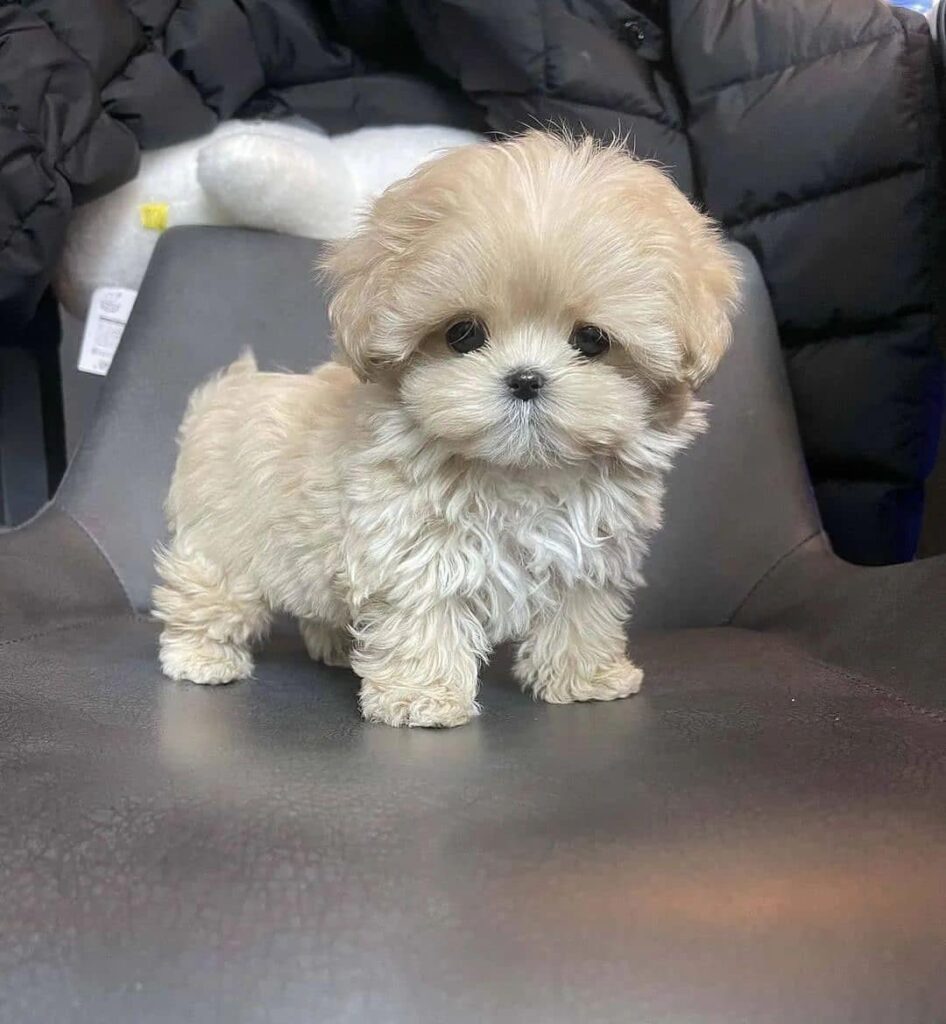

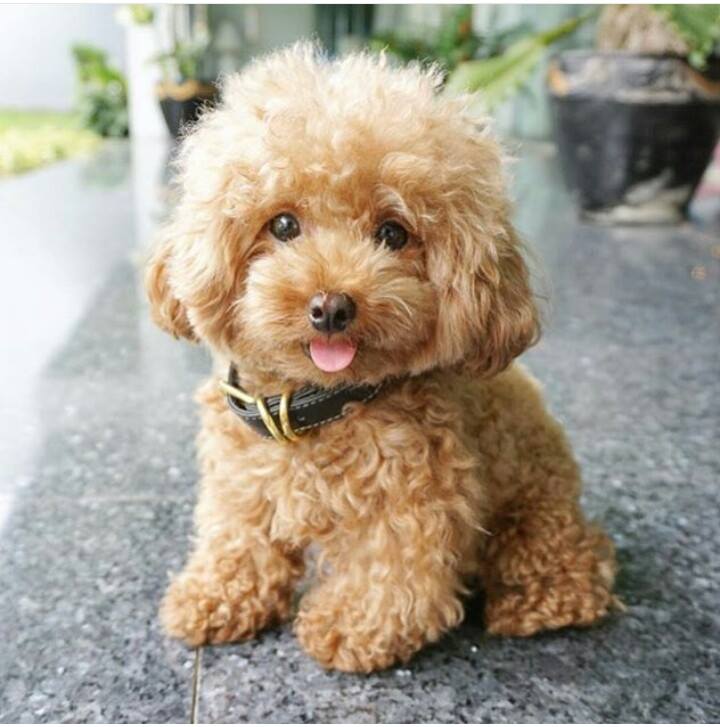
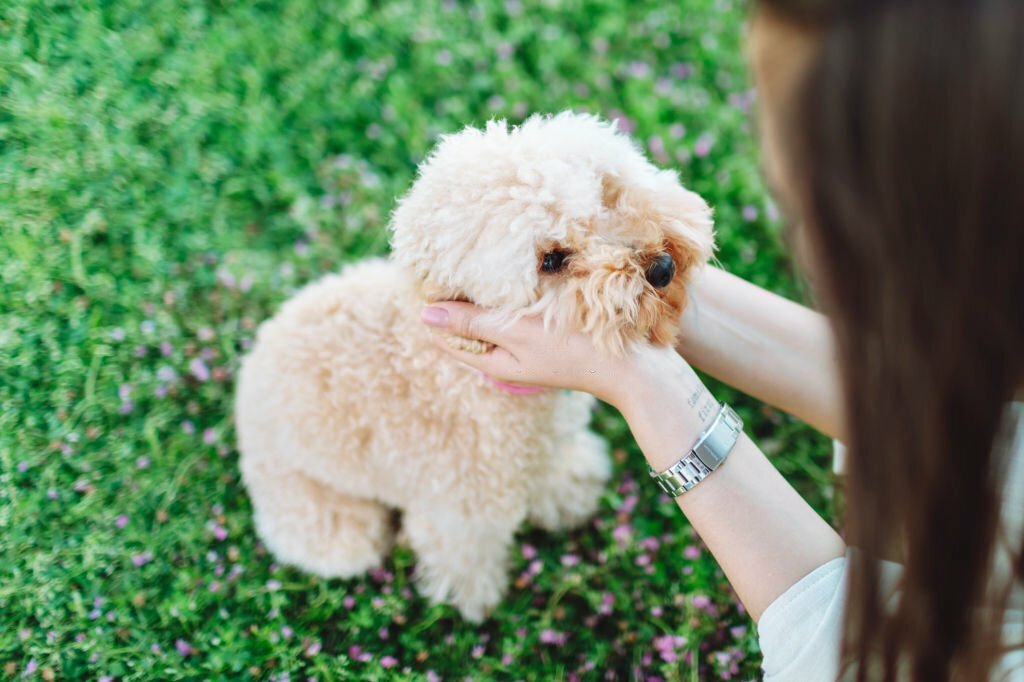
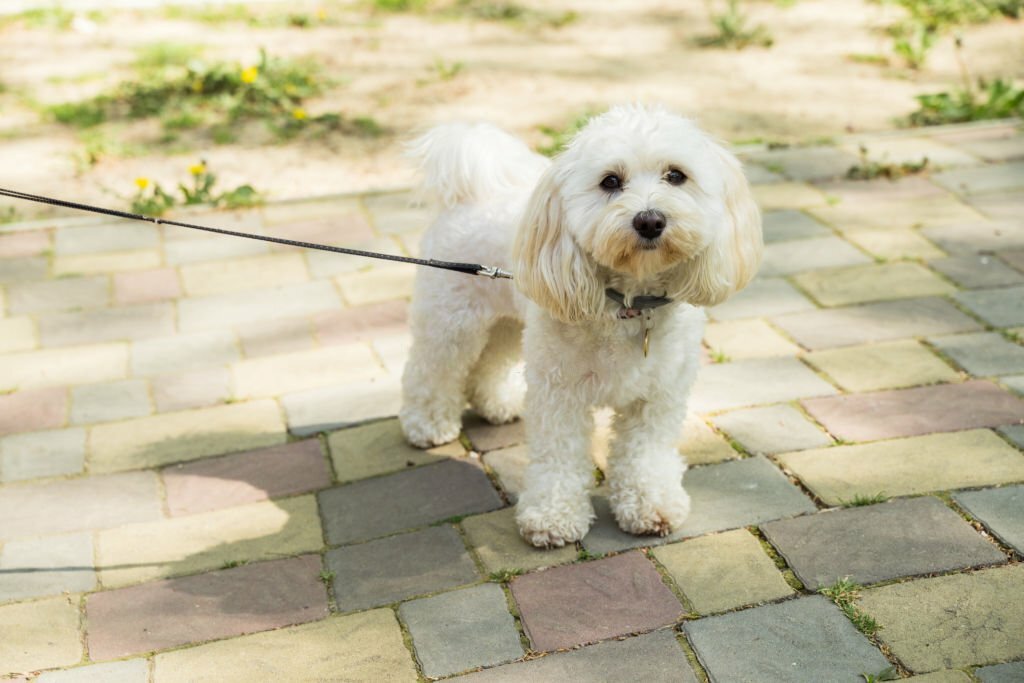
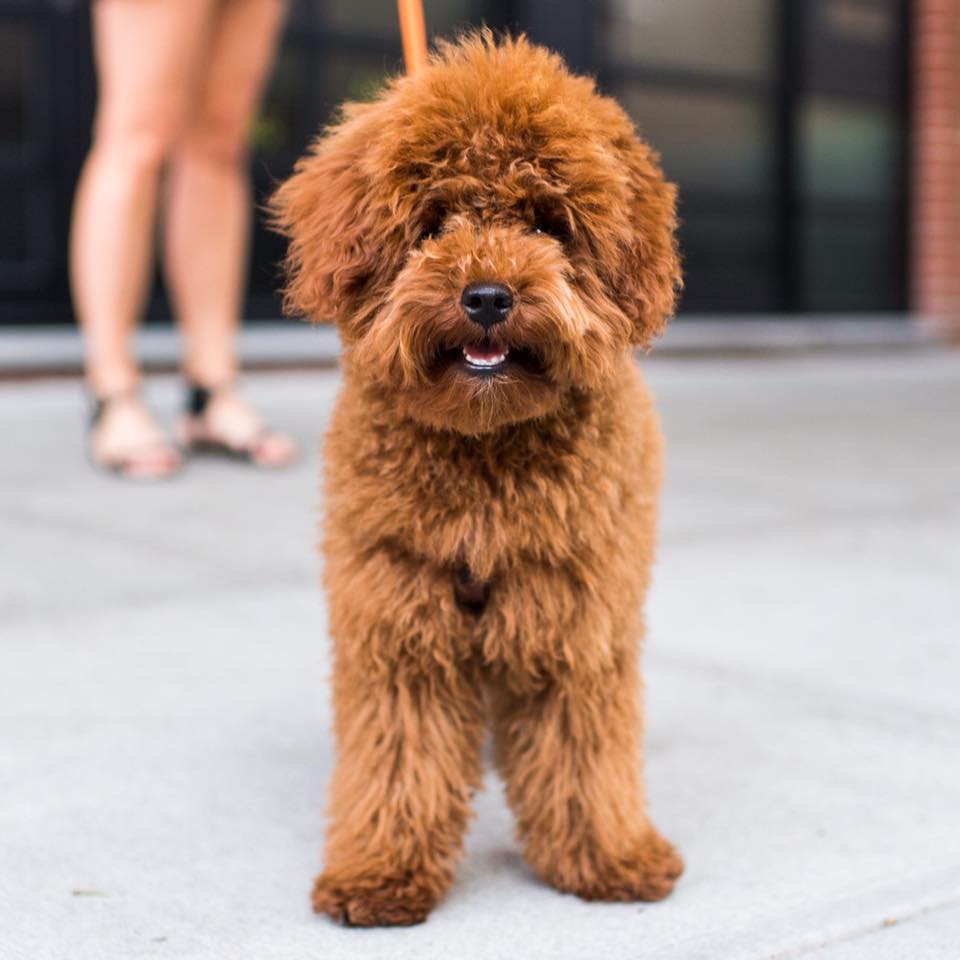
Overview
Maltipoos, a crossbreed of the Maltese and the Poodle, are cherished for their hypoallergenic coats and minimal shedding, making them great for people with allergies. These clever and affectionate dogs adapt well to different living situations, whether it’s a spacious house or a cozy apartment.
A typical Maltipoo weighs between 5 and 15 pounds, but some breeders offer teacup sizes if you want something smaller. With proper care and good genetics, these dogs can enjoy a lifespan of 10-15 years. They are known for their friendly nature and ability to bond closely with their human companions.
Regular grooming is essential to keep their coat—straight, wavy, or curly—in top condition, thanks to the Poodle’s influence on their genetics.
Key Traits
Maltipoo Temperament
Maltipoos are known for their friendly nature and adaptability, making them perfect for various homes. These dogs are a mix of the loving Maltese and the intelligent Poodle, resulting in a pet that’s both affectionate and intelligent. Allergy sufferers often prefer them due to their hypoallergenic coats, which come in various types and colors.
Training a Maltipoo is usually a rewarding experience because they are quick learners and respond well to positive feedback. This combination of traits makes them particularly suitable for those looking for a devoted and easy-to-train pet.
Key Maltipoo Traits
| Trait | Description |
|---|---|
| Sociability | He loves being around people and is very loving |
| Trainability | Smart and learns quickly |
| Coat | Allergy-friendly, varies in appearance |
This chart outlines the standout qualities of Maltipoos, underlining why they are an excellent choice for anyone wanting a warm-hearted and cooperative companion.
Breed Origin Development
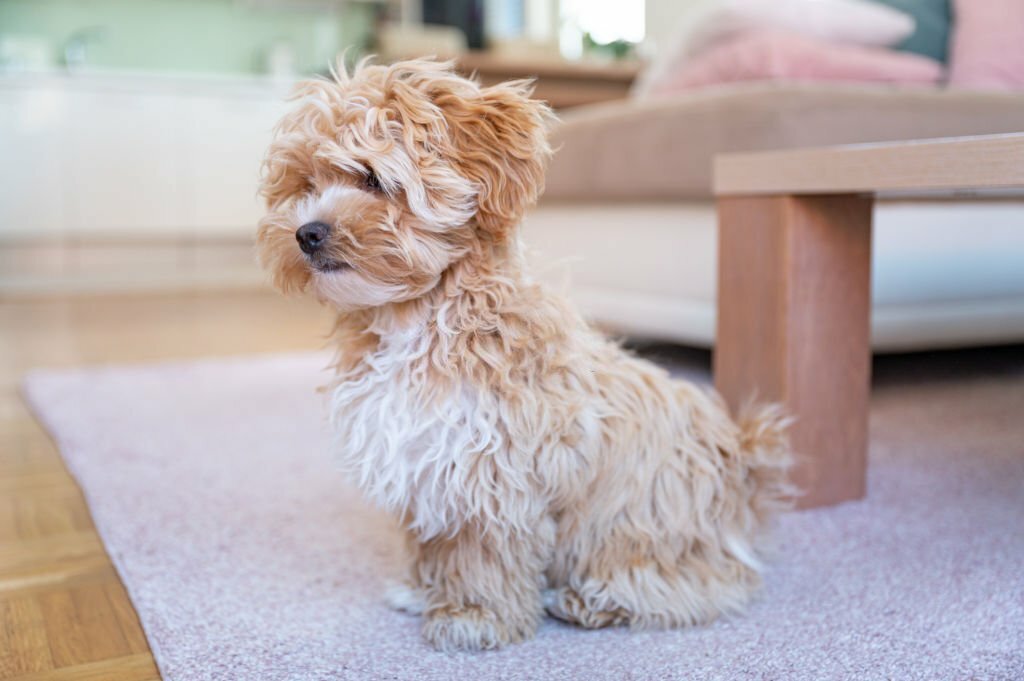
The creation of the Maltipoo breed showcases the intentional mixing of the Maltese and Poodle breeds to combine their best qualities. This method of creating mixed breeds aims to improve genetic health and robustness by crossbreeding, known as Hybrid Breed Evolution.
It also aims to combine the standout traits of the parent breeds, especially the intelligence of the Poodle and the affectionate nature of the Maltese.
In addition, breeders keep an eye on Historical Popularity Trends to stay ahead of what pet owners are looking for.
They also keep records of the breed’s development to guide responsible breeding and uphold the breed standards.
Experts in the field continue to study the impact of such breeding practices on dogs’ health, behavior, and adaptability.
Hybrid Breed Evolution
The Maltipoo, a hybrid breed, is the result of mixing the Poodle and Maltese to get the best traits from both. These dogs combine the Poodle’s smarts and low-shedding coat with the Maltese’s friendly size and nature.
No person takes credit for creating the Maltipoo, but the breed’s charming personality and variety of coat colors show the successful combination of the two breeds’ genes.
Their growing popularity reveals that people are looking for dogs that look good and fit well with their lifestyles, contributing to the variety and growth of mixed breeds in the dog world.
Parent Breeds Contribution
The Poodle and the Maltese have given the Maltipoo its distinctive charm and practicality as a pet. Thanks to the Poodle, Maltipoos have a hypoallergenic coat and are pretty smart, making them great pets for those with allergies and families looking for an intelligent dog.
The Maltese contributes its friendly nature and small size, making the Maltipoo a lovable and easy-to-handle companion. The careful mixing of these breeds aims to create a dog that balances both breeds’ best qualities and highlights the importance of responsible breeding to ensure the health and well-being- of these beloved dogs.
Historical Popularity Trends
The Maltipoo has quickly become a beloved breed since its introduction, winning over hearts with its allergy-friendly coat and adaptable nature.
The breed’s creation was intentional, mixing the Maltese’s friendly demeanor with the Poodle’s minimal shedding attributes. This combination has made the Maltipoo increasingly popular, especially among people looking for an excellent pet that suits their need for a low-allergen environment.
The breed’s growing favor reflects a shift toward choosing charming dogs that meet specific lifestyle requirements.
Weight and Height
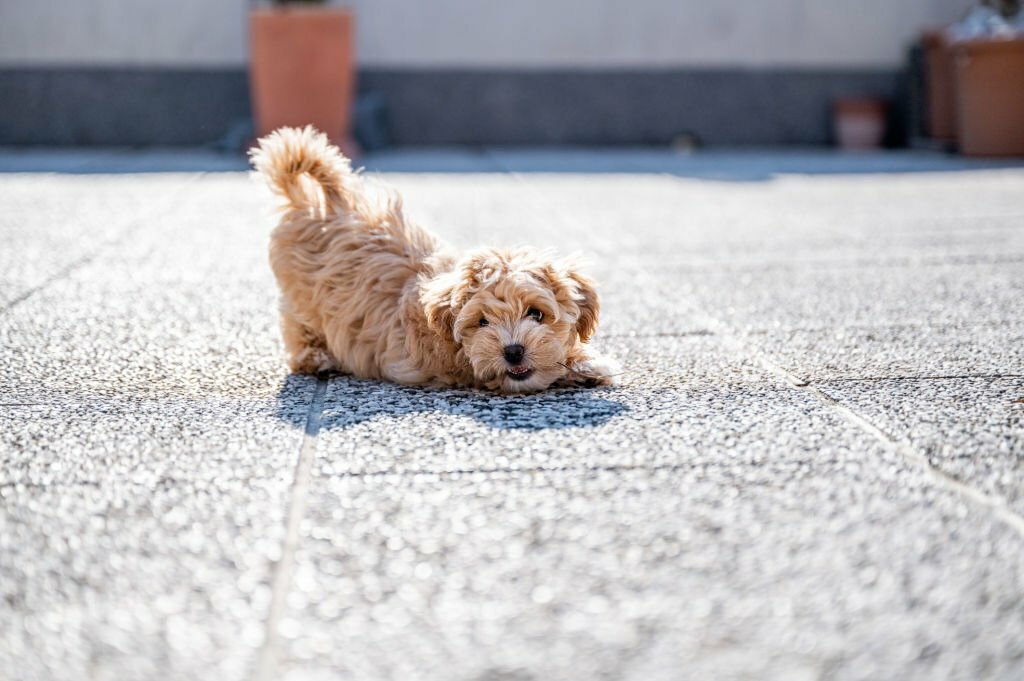
Understanding the size of an adult Maltipoo is beneficial for future pet owners to gauge the amount of living space needed and the expected growth of their new companion. Tracking a puppy’s development with a chart is a practical way to ensure they develops at a healthy rate compared to established breed standards.
Predicting a Maltipoo puppy’s future weight early helps in planning their diet and healthcare needs to support their growth into adulthood. Awareness of the healthy weight and height ranges and how to measure them is vital for monitoring your dog’s health and ensuring they are on the right track.
Average Adult Size
On average, a full-grown Maltipoo measures around 8 to 14 inches tall and has a weight that typically ranges from 5 to 20 pounds. The size of these dogs can vary quite a bit, influenced by whether the Poodle side of their ancestry is Toy or Miniature. Because Maltipoos are a mix, their size can also be affected by individual growth trends and overall health.
Regular grooming is necessary for these dogs to keep their coats in good shape. Their compact size makes them versatile companions, fitting comfortably into various home environments.
Growth Chart Tracking
Tracking a Maltipoo’s growth is vital to ensure they’re growing as they should for their breed. The size of a Maltipoo can vary depending on whether the Poodle parent was a Toy or Miniature, affecting their overall height and weight. Keeping tabs on their growth with regular check-ups and comparing their stats to breed standards is a proactive way to catch any unusual patterns that might signal health issues.
Checking a Maltipoo’s growth is also an excellent time to examine the condition of their coat, which needs consistent care. Close observation is crucial for the smaller Teacup Maltipoos because they’re more prone to health complications. Tracking growth can also assist in making sure these pets are a safe size for play with small children.
Puppy Weight Estimates
Analyzing a growth chart can give you a good prediction of how big your Maltipoo puppy will get. These charming little dogs are a mix of a Maltese and a Toy Poodle, inheriting their size from both breeds. Most Maltipoos are small, with adults typically weighing 5 to 20 pounds and standing 8 to 14 inches tall. Their size can vary, mainly depending on the size of their Toy Poodle parent.
For example, a Teacup Maltipoo, which comes from a smaller variety of Toy Poodle, will generally be tinier, usually weighing in at 3 to 5 pounds. Each Maltipoo has a distinct size that reflects its individuality. You can get a good idea of their adult size by tracking their growth in terms of weight and height from the puppy stage.
Ideal Weight Ranges
A healthy Maltipoo typically weighs 5 to 15 pounds and stands 8 to 14 inches tall. These numbers can vary based on the size of the Poodle in their ancestry. Keeping an eye on their weight and height is vital because changes can signal health problems.
Optimal weight is critical for preventing joint issues and heart disease linked to being overweight. Conversely, dogs that don’t weigh enough can have nutritional problems.
To keep Maltipoos at a healthy weight, provide them with a well-balanced diet tailored to their energy needs and stage of life. Consistent exercise is also a part of this equation. Regular check-ups with a veterinarian are recommended to ensure your Maltipoo stays within the ideal weight bracket, essential for their health and well-being.
Height Measurement Methods
When you measure the height of a Maltipoo, make sure the dog stands on a flat surface with its back straight. To get an accurate size, measure from the highest point on the dog’s shoulders, known as the withers, straight down to the floor. This approach is essential for consistently tracking the dog’s growth and health.
This mixed breed, a combination of Poodle and Maltese genes, shows a range in size and coat characteristics. Even though a Maltipoo’s coat is low-shedding and hypoallergenic, it doesn’t affect how tall the dog stands. So, always stick to this objective method for measuring.
Temperament Traits
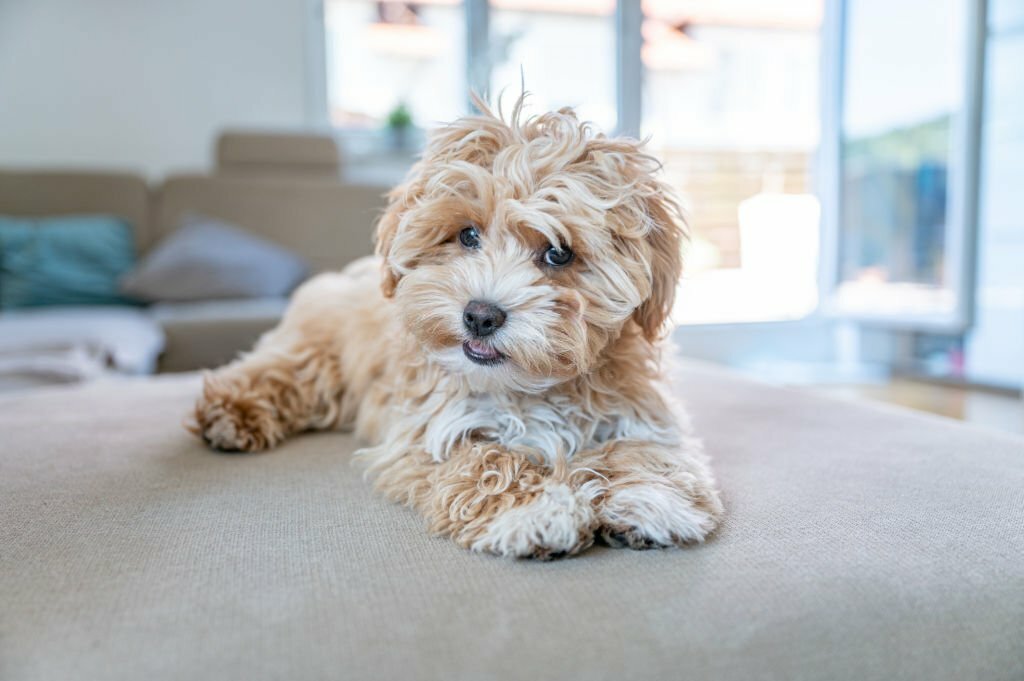
The Maltipoo is a charming mixed-breed dog known for its delightful personality. Owners looking to bring this breed into their homes will find it helpful to learn about their behavior. Experts use various methods to assess the Maltipoo’s characteristics, such as tests that measure their playful and loving behavior and socialization exercises to see how well they interact with others.
Cognitive evaluations help determine their intelligence and ability to learn new things quickly. Observing these dogs in different home environments gives insight into how well they adjust to various living situations.
Knowing the Maltipoo’s traits helps potential owners determine if this breed matches their lifestyle. These details are critical for creating a harmonious relationship between the dog and its human companions. With the proper understanding and environment, Maltipoos can be a joyful addition to many families.
Playful and Affectionate Nature
Despite their petite stature, Maltipoos are known for their lively and loving personalities. They love to play and quickly form strong bonds with their owners, making them an ideal pet for those seeking an interactive furry companion.
These dogs are full of energy, and regular playtime is a great way to keep them active and maintain their close connection with their human families. It also supports their brain development.
Maltipoos naturally enjoy participating in fun activities that benefit their minds and bodies. When training these affectionate dogs, using positive reinforcement helps to encourage good behavior and strengthens the bond between dog and owner.
Their friendly nature and love for engagement make them wonderful companions for those who enjoy an active and friendly pet.
Socialization Needs
Maltipoos are naturally friendly, so early and regular social interaction helps them get along with various people and other animals. A consistent approach to exposing them to different settings and mingling with other dogs builds a solid foundation for their social development.
Rewarding them with treats and praise when they show calm and friendly behavior towards new experiences effectively supports good social habits.
Early obedience training is also vital as it teaches the Maltipoo to follow commands and control their impulses. This helps prevent problems like excessive barking and ensures they get along well with humans and other pets.
Intelligence and Trainability
Maltipoos, a crossbreed of the Poodle and Maltese, are known for their intelligence and flexibility. Studies have shown that Maltipoos are highly responsive to positive reinforcement training. Their desire to please and cognitive skills mean they often quickly pick up new commands and tricks.
They’re also very social, which makes them eager to interact with their trainers and caregivers. Training sessions should be regular, patient, and mentally engaging for the best results to maximize the Maltipoo’s intelligence and eagerness to learn.
Behavioral Tendencies
Maltipoos may be small but full of life and affection, making them great pets for many homes.
Each dog has its personality, but Maltipoos often form strong bonds with their owners, showing loyalty and a love for companionship.
These dogs enjoy playing games like fetch, which keeps their minds and bodies active. They’re generally good with other pets due to their low instinct to chase.
When Maltipoos are appropriately introduced to different people and environments, it helps them become sociable and can prevent excessive barking.
These intelligent and flexible dogs develop good behavior through consistent and positive training.
Adaptability to Families
The Maltipoo is a highly adaptable dog, perfect for various family setups, including those in apartments. These dogs are small and don’t need much exercise, so they do well in smaller living spaces.
Thanks to their loving and responsive nature, they quickly become integral to the household. Ideal for new dog owners, Maltipoos are known for their trainability and desire to make their owners happy.
Their intelligent and friendly personalities make them great pets for children and adults, ensuring they fit right into the family dynamic.
Common Health Concerns
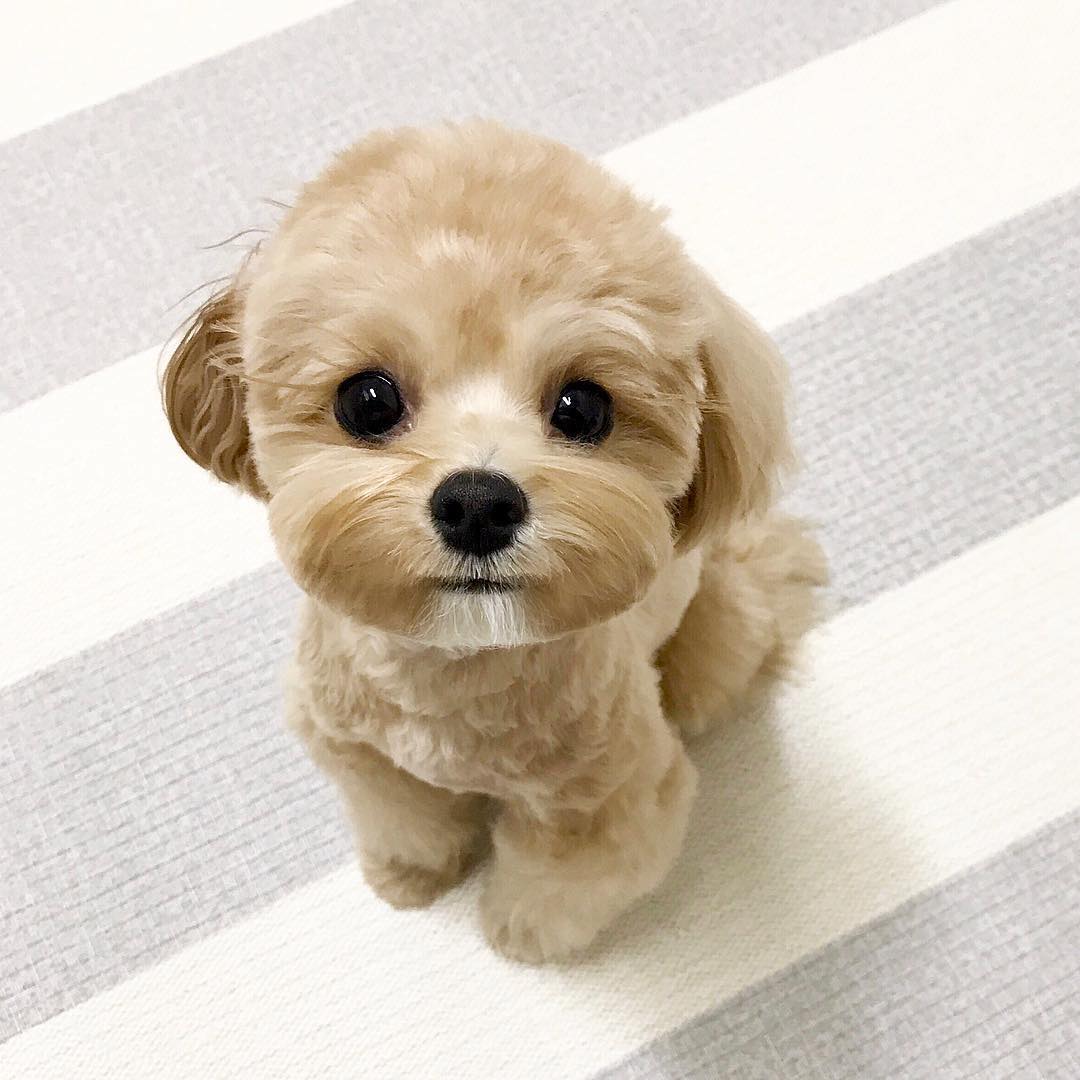
Maltipoos, a blend of Maltese and Poodle breeds, can inherit certain health risks from their parent lines. Owners should watch for genetic issues like White Shaker Syndrome and Progressive Retinal Atrophy.
Maintaining preventive care such as vaccinations and routine check-ups is vital to maintaining their well-being. Spotting symptoms of illness early on can lead to prompt treatment and a better chance of recovery.
Lifestyle choices, including a balanced diet and regular exercise, play a vital role in Maltipoo’s health. A consistent and thoughtful approach to care is essential for the well-being of these beloved dogs.
Genetic Health Risks
Maltipoos, a crossbreed of Maltese and Poodle, can inherit certain health risks. They are prone to White Shaker Syndrome, which causes widespread shaking and could be due to genetic factors. Another issue to watch is Patellar Luxation, often reported by the Orthopedic Foundation for Animals, where the kneecap dislocates and can cause pain or difficulty walking.
These dogs may also develop progressive retinal atrophy (PRA), an eye condition that progressively worsens and can result in blindness. Genetic testing and careful breeding practices are recommended to minimize these health issues. This approach helps identify and manage the inherited conditions prevalent in Maltipoos’ parent breeds.
Preventive Care Tips
For Maltipoo owners, preventing health issues is critical, especially for conditions like White Shaker Syndrome, Epilepsy, and Patellar Luxation. Regular vet check-ups are vital for catching and managing these issues early on.
Brushing your Maltipoo’s teeth daily helps prevent dental problems that small breeds often face. Keeping up with grooming, such as regular brushing and ear cleaning, wards off skin and ear infections before they can start.
A strong prevention plan includes genetic testing, a balanced diet, plenty of exercise, and activities that keep your Maltipoo’s mind sharp, all contributing to their overall well-being and lifespan.
Common Illness Symptoms
Maltipoo owners should watch for health issues such as stomach problems, frequent ear infections, skin irritation, or unexpected diarrhea. These issues might stem from allergies, which the breed’s minimal shedding coat can aggravate.
Although Maltipoos don’t shed much, they still need daily grooming to prevent skin conditions. Catching these signs early is vital for managing their health more effectively.
Getting health clearances for genetic conditions like Patellar Luxation and Progressive Retinal Atrophy is also wise. These clearances help Maltipoo owners understand their pets’ genetic health and can inform preventive care plans.
Maintenance Requirements
Caring for Maltipoos means paying attention to several key areas to keep them healthy and happy. Their care should be thorough and consistent, focusing on these essential elements:
Grooming is more than just keeping them looking good; it’s about maintaining their hypoallergenic coats to avoid tangles and mats. These dogs benefit from regular brushings and the occasional trim.
Regarding staying active, Maltipoos need enough exercise to keep their minds sharp and their bodies fit. A daily walk or play session can go a long way in keeping them in good shape.
Regular visits to the vet are paramount for catching and addressing any health issues early, especially for those familiar with their breed.
As for their diet, it’s not just about filling their bowl; it’s about providing balanced nutrition tailored to their life stage, size, and how active they are to support their overall well-being.
Grooming Frequency
Maltipoos are prized for their low-shedding coats, but consistent grooming keeps them looking great and free from mats. Brushing your Maltipoo regularly, preferably every day, is essential to get rid of dirt and avoid tangles, which maintains the appearance and health of the coat.
Bathing your Maltipoo around once per month will help keep their skin and coat healthy and clean. In terms of dental care, brushing their teeth a few times a week is good practice to maintain oral health and prevent gum disease.
Consistent grooming keeps your Maltipoo in top condition and strengthens your bond.
Exercise Needs
Switching from grooming to their physical needs, Maltipoos must be kept active to stay healthy and happy. These dogs should get regular exercise to prevent obesity and keep their mind sharp. A typical Maltipoo day should include leisurely walks and playful activities.
Taking them out for activities twice daily can burn off their abundant energy and prevent any mischief caused by boredom.
Research shows that staying active is vital for a dog’s brain and mood. Maltipoo owners are responsible for providing consistent exercise to support their pet’s physical fitness, mental sharpness, and emotional balance.
Health Check Schedule
Keeping your Maltipoo in top shape demands routine veterinary care, with annual check-ups vital to this process.
During these visits, vets may administer vaccines, check teeth for signs of decay, and screen for breed-specific ailments like Patellar Luxation and Progressive Retinal Atrophy. It’s vital to catch and manage these health issues early, so screenings through groups such as the Orthopedic Foundation for Animals are recommended to help keep your pet’s health in check.
To promote their overall well-being, Maltipoos benefit from a care plan tailored to their unique needs, including their physical and mental wellness.
Such a plan prevents illness and ensures they enjoy a high quality of life with their owners. Regular care helps identify issues like dental problems, allergies, or inherited conditions before they become serious, leading to a more vibrant and enjoyable life for your fluffy companion.
Diet Considerations
A Maltipoo needs a diet that supports its lively disposition and helps avoid breed-specific health issues. These dogs benefit from high-quality food designed for small breeds, which provides the right balance of calories and protein for their vigorous metabolism.
When you welcome a Maltipoo into your home, paying attention to their dietary requirements, including any special needs, to prevent hereditary health problems is essential. Regular check-ups with a vet can help you maintain the proper diet for your Maltipoo’s well-being.
Training Commitment
After setting up a healthy diet for your Maltipoo, focusing on their training and socialization is vital. Maltipoos are intelligent dogs, and they learn best with positive reinforcement. Committing to at least 15 minutes of exercise daily can significantly improve their behavior. Regular training helps prevent excessive barking.
To keep their coat in good condition, brush it at least every other week and schedule a session with a professional groomer twice a month to avoid tangles.
Daily physical activity is essential to prevent unwanted behaviors and support a healthy lifestyle for your pet.
Dietary Needs
A Maltipoo’s diet is crucial for its health and lifespan. Research shows that what these hybrid dogs eat dramatically impacts their well-being. Providing a balanced diet that supports their body’s needs is essential. Avoiding foods that cause allergies is also crucial.
Setting up a regular feeding routine helps with their digestion. Adjusting meals based on the dog’s age, activity, and health is also beneficial. Tailoring their nutrition in this way can help ensure they live a happy and healthy life.
Balanced Nutrition Importance
Balanced Nutrition for Maltipoos
Maltipoos, a crossbreed of Maltese and Poodles, thrive on a diet that meets their specific needs, which can help prevent health issues like obesity and joint problems. It is essential to craft a meal plan that addresses their unique needs due to their mixed heritage.
A well-rounded diet can contribute to a longer life span for Maltipoos, who can live between 10 to 15 years with the proper care. Regular vet visits are vital to adjust their diet as needed, ensuring they stay healthy throughout their lives.
Common Food Allergies
Caring for a Maltipoo’s diet requires awareness of their potential food allergies. Symptoms like stomach upset and itchy skin can arise from certain foods.
Though Maltipoos are often praised for being better for people with allergies because they shed less and produce fewer allergens, this doesn’t mean they won’t have issues with certain foods.
Regular vet visits and a well-rounded diet are vital in keeping these dogs healthy and avoiding allergic reactions.
The varied genetic background of Maltipoos may reduce their chances of getting some inherited health problems, including food allergies.
Feeding Schedule Recommendations
Creating a feeding schedule for your Maltipoo is critical to their well-being. It ensures they get the necessary nutrients regularly. For small breeds like the Maltipoo, spreading their daily food intake over several meals can prevent low blood sugar levels, a common issue in petite canines. Adult Maltipoos typically do well on two to three meals daily.
In contrast, puppies might need to eat more often to support their rapid growth. New dog owners will appreciate how a consistent feeding routine promotes healthy development and helps manage weight.
Choosing a premium dog food that suits your Maltipoo’s age, how active they are, and any health needs they might have is also vital to their diet.
Additional Information
What is the history of the Maltipoo?
The Maltipoo is a mixed breed created by crossing the Maltese and the Poodle. It is believed that this hybrid breed originated in the United States, possibly in the late 1990s or early 2000s.
What are the characteristics of the Maltipoo breed?
Maltipoos are small, typically 8 to 14 inches tall, and weighing between 5 and 20 pounds. They have a hypoallergenic coat, making them suitable for those with allergies. Additionally, they are known for being intelligent, adaptable, and affectionate.
What makes maltipoos popular as pet companions?
Maltipoos make excellent pet companions due to their small size, hypoallergenic nature, and friendly disposition. They are well-suited for apartment living and can adapt well to various lifestyles, including those of first-time dog owners.
Maltipoo Health and Care
What are common health issues in multipool?
Like all dog breeds, multipool may be prone to specific health issues such as progressive retinal atrophy. Pet parents must be aware of these potential health concerns and take proactive measures to ensure their maltipoo’s well-being.
How can pet parents ensure the health and well-being of a Maltipoo?
Regular veterinary check-ups, a balanced diet, and sufficient exercise are crucial for maintaining a maltipoo’s health. Preventive care, including vaccinations and parasite control, is also essential to safeguard their well-being.
What are some frequently asked questions about Maltipoo health?
Common questions about Maltipoo health may relate to their hypoallergenic coat, grooming, and exercise requirements. Potential pet owners often inquire about the lifespan of maltipoos and how to address specific health issues that may arise.
Grooming and Training Your Maltipoo
How should pet owners groom their maltipoos?
Regular grooming is essential for maintaining a Maltipoo’s coat and overall hygiene. This may include brushing, bathing, nail trimming, and dental care. Professional grooming services can also help keep the maltipoo’s skin healthy and free from matting.
What are some tips for training a Maltipoo effectively?
Training a Maltipoo requires patience, consistency, and positive reinforcement. Obedience training, socialization, and regular play sessions are beneficial for shaping a well-behaved and friendly dog. Maltipoos respond well to reward-based training methods.
What are the essential aspects to consider when grooming a Maltipoo?
Given their small size and hypoallergenic coat, grooming a Maltipoo requires attention to detail. It’s essential to use appropriate grooming tools, choose gentle grooming products, and establish a grooming routine that keeps the dog comfortable and healthy.
Choosing a Maltipoo as a Pet Companion
What should potential pet owners consider before choosing a Maltipoo?
Potential pet owners should consider the maltipoo’s size, grooming requirements, exercise needs, and temperament before deciding. Being prepared for the commitment and responsibilities of caring for a small, affectionate companion dog is essential.
How can pet owners best care for a Maltipoo on a day-to-day basis?
Providing a balanced diet, regular exercise, mental stimulation, and affectionate interaction are integral to a maltipoo’s daily care. Maintaining a clean living environment, attending to grooming needs, and ensuring access to quality veterinary care contribute to their overall well-being.
How can pet owners best socialize their maltipoo and ensure they are not left alone for extended periods?
Socialization from an early age, exposure to various environments, and positive interactions with people and other animals help a Maltipoo develop into a well-adjusted and friendly companion. Additionally, arranging for companionship or supervision when the owner is away prevents feelings of isolation or anxiety in the dog.

